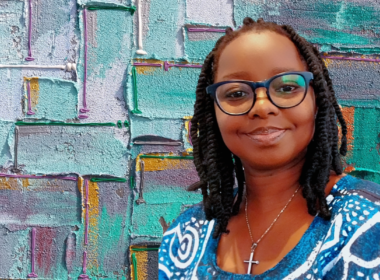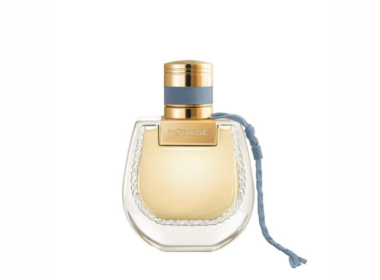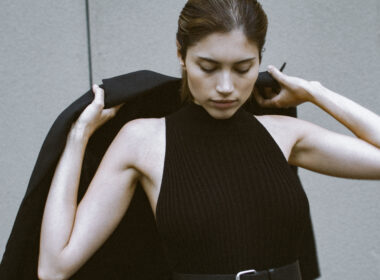If you think you’ve seen it all with Western white gowns and “I do’s,” think again. Asian wedding traditions offer a mesmerising mix of rituals, symbolism, and festivities that make them a true spectacle. Asia, the world’s largest and most diverse continent, offers a dazzling array of wedding customs that blend ancient rituals with modern romance. Whether you’ve been to an Asian wedding or not, these unique and captivating traditions will not only stir your curiosity but might also make you rethink what a wedding should look like.
So, buckle up as we explore some of the most fascinating wedding customs from across Asia. You might be surprised by the meaning and significance of these rituals—and even be tempted to adopt a few for your own celebrations!
1. India: The Grandiosity of the Baraat and the Sacred Fire

When you think of Indian weddings, what comes to mind? A lavish, multi-day celebration, the clinking of bangles, the rhythmic beats of the dhol, and an explosion of color. Indian weddings are an extravagant affair, full of rituals that vary across different regions. One of the most visually captivating traditions is the Baraat. The Barat isthe groom’s procession to the wedding venue, often on horseback or even an elephant, with a full entourage of dancing guests and live music. It’s a literal parade of celebration, joy, and extravagance.
The couple’s union is further sealed by Agni, the sacred fire, in a ritual called Saptapadi, where the bride and groom walk around the fire seven times, taking vows of loyalty, love, and mutual respect. The flames symbolize purity, and the vows solidify the couple’s eternal bond.
Another stunning tradition is the Mehendi ceremony, where the bride’s hands and feet are intricately adorned with henna designs. It’s believed that the darker the henna, the deeper the bond between the couple. Do Western weddings miss out on deeper meaning by focusing only on the party, rather than the sacredness of the union?
2. China: The Tea Ceremony and Betrothal Gifts
Chinese weddings are a fascinating mix of tradition and symbolism, with red playing a starring role. The colour symbolises joy, luck, and prosperity, making it the most important hue for the ceremony. The bride often dons a red Qipao, a traditional Chinese dress, during the ceremony to bring blessings to the marriage.
One of the most important customs is the Tea Ceremony, where the bride and groom serve tea to their elders as a sign of respect and gratitude. This ritual signifies the couple’s reverence for their families and also serves as an official welcoming of the bride into the groom’s family.
Additionally, before the wedding takes place, families exchange Betrothal gifts, or Caili, which range from symbolic items like gold jewellery to practical goods such as wine and tea. These gifts are meant to show goodwill and solidify the agreement between families.
More Like This
Indian Destination Weddings: A Fab-Approved Packing Guide For Discerning Gentlemen
Unbelievable Wedding Traditions from Diverse Cultures, the Third is Shocking
3. Japan: The Serenity of the Shinto Ceremony
In contrast to the glam of Indian and Chinese weddings, Japanese Shinto weddings are known for their grace and simplicity. Couples often marry in a Shinto shrine, where the ceremony is stewed in spirituality and ancestral reverence. The bride wears an all-white shiromuku, symbolising purity, while the groom dons a traditional black kimono.
One of the most revered traditions is the San-San-Kudo, or the “Three-Three-Nine” ritual, where the couple takes three sips of sake from three different cups. Each set of three sips represents a connection between the bride, the groom, and their families. Japanese weddings are not loud or extravagant; they are poetic, serene, and deeply spiritual.
4. Korea: The Pyebaek and Duck Symbolism
South Korean weddings blend modernity with deep-rooted Confucian traditions. One of the most profound rituals is the Paebaek ceremony, which usually takes place after the main wedding event. During Paebaek, the bride and groom pay their respects to the groom’s family by offering deep bows. In return, the elders throw dates and chestnuts to symbolise fertility, blessing the couple with many children.
Traditional hanboks (Korean formal attire) are worn during this ceremony, adding to its cultural significance. A curious Korean wedding symbol is the wild duck. In ancient times, grooms would offer a wooden duck to the bride’s family, signifying fidelity and a long-lasting marriage, since ducks are believed to mate for life.
5. Thailand: The Water Ceremony and Binding the Souls
In Thai culture, the Rod Nam Sang ceremony is one of the most heartwarming wedding rituals. The couple kneels as elder relatives pour blessed water over their hands while offering blessings for a prosperous and harmonious marriage.
Thai weddings also include the Sai Sin, a sacred thread used to bind the couple’s wrists together, symbolising the joining of their souls. The thread is blessed by a monk or elder and signifies a divine connection.
6. Vietnam: The Asking Ceremony and Respect for Elders
In Vietnam, weddings are a blend of French colonial influence and rich local traditions. Before the wedding itself, there’s a unique Asking Ceremony where the groom’s family formally visits the bride’s home to ask for permission for the marriage. It’s a deep act of respect for the bride’s family, acknowledging their importance in the union.
During the ceremony, the couple will also make offerings and bow to their ancestors, ensuring that the lineage is honoured and the future blessed.
7. The Philippines: The Coin Ritual and Veil Ceremony
Filipino weddings are a unique fusion of Western and indigenous practices. One of the most striking customs is the Arrhae (or coin ceremony), where the groom gives 13 gold coins to the bride as a symbol of his commitment to support and provide for her and their future family. These coins are often blessed by a priest, highlighting the religious undertones of marriage in the Philippines.
In addition, the couple is draped in a veil and bound together with a cord, symbolising unity and the protection of their marriage by divine forces. Are we too focused on individuality in marriage today? Could we learn from cultures that emphasise unity and shared responsibility?
8. Malaysia: The Bersanding Ceremony and Henna Art
Malaysian weddings, especially among the Malay Muslim community, are filled with beautiful rituals that reflect both religious and cultural significance. One of the most iconic is the Bersanding Ceremony, where the bride and groom sit on a throne-like stage, surrounded by family and friends. This “sitting-in-state” ritual is a public declaration of their union and the community’s support.
The Bunga Telur ceremony is another beautiful tradition, where beautifully decorated eggs are given to guests as a symbol of fertility and new life. Malaysian weddings, with their regal flair, are a blend of community, religious devotion, and opulent displays of culture.
Another beautiful tradition is the Henna Art drawn on the bride’s hands, a custom shared with many cultures across Asia, symbolising beauty, protection, and celebration. Stay up to date on the latest in fashion, arts, beauty, and lifestyle by following FAB L’Style Magazine.
What Do These Asian Wedding Traditions Teach Us?
The beauty of Asian wedding traditions lies in their deep and symbolic meanings. They’re not simply about two people falling in love; they’re about family, ancestors, spirituality, and community. Have modern weddings become too superficial and disconnected from their deeper meaning? Are we losing touch with the rituals that make marriage truly sacred?
Michaela DePrince: A Dancer Who Soared Above the Ashes of War

















